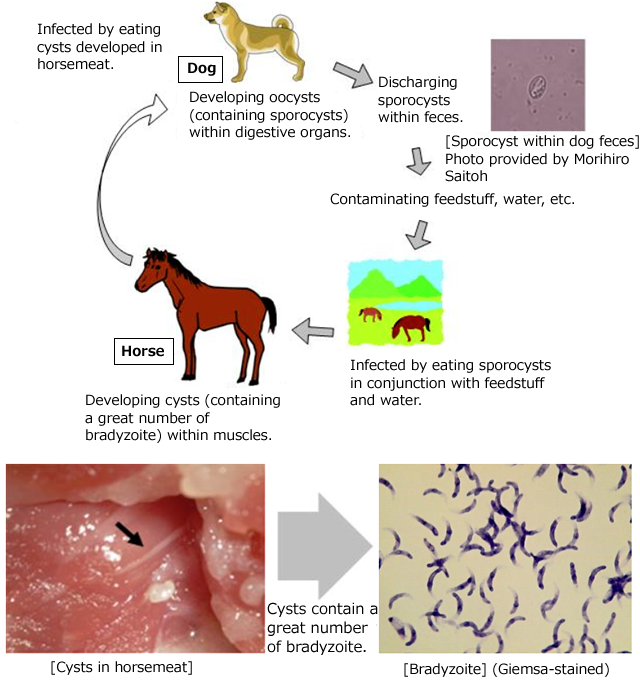Tokyo Food Safety Information Center » Good things to know »Food parasites »Sarcocystis fayeri: Protozoa (sporozoa)
Sarcocystis fayeri: Protozoa (sporozoa)
In recent years, cases of food poisoning from unknown causes have occurred nationwide, in which the patients underwent transient and slight vomiting and diarrhea several hours after having meals. Because, in many of these cases, the patients ingested raw horsemeat (sashimi), the Ministry of Health, Labor and Welfare and other organizations investigated and found that Sarcocystis fayeri parasites in contaminated horses caused humans to undergo such symptoms as diarrhea.
Freezing horsemeat can prevent food poisoning caused by Sarcocystis fayeri. For most horsemeat distributed in Japan for human consumption as sashimi (edible raw meat), measures are taken such as freezing at the place of production before shipping.
Characteristics of Sarcocystis fayeri:
| Size | Width: 0.5 to 1 mm Length: Up to 1 cm |
|---|---|
| Characteristics: | The intermediate hosts are horses and the definitive hosts are dogs. |
Life cycle of Sarcocystis fayeri:

Effects on humans:
Sarcocystis fayeri is not parasitic in humans but if humans ingest raw horsemeat contaminated by a great number of Sarcocystis fayeri, these persons undergo transient diarrhea, vomiting, stomachaches and other digestive symptoms several hours after eating. The symptoms are light and quickly disappear.
Main host animals:
Horses and dogs
Methods for prevention:
Freezing horsemeat at -20℃ (temperature in the center) for 48 hours or more can prevent food poisoning.
Glossary
- Intermediate hosts and definitive hosts: In many cases, the parasites move among multiple hosts. The hosts within which the parasites become mature are referred to as “definitive hosts”, and those contaminated with the parasites in the growing stages, “intermediate hosts”.
- Life cycle: The cycle in which an egg or a larva of a parasite grows, metamorphoses into an imago (mature stage), and produces the next generation. If the life cycle of a parasite is known, infection can be prevented by stopping its growth in a phase of the life cycle.
- Cyst, oocyst, sporocyst, and bradyzoite: Terms used to refer to forms in the growing phases in the life cycle of a sarscosporida (Sporozoa living in the host’s flesh)